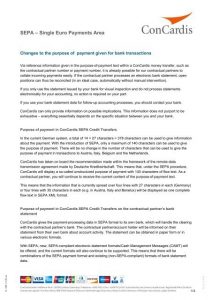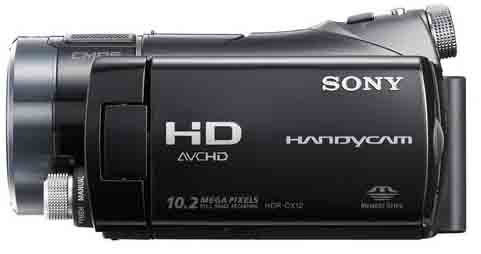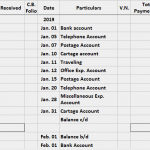Content

Let F1 and F2 be the force exerted by the seeping water respectively on the upstream and downstream faces of the elements. Determine the head at the inlet and outlet of the flow net. An equivalent amount of flow is passing through each streamtube , therefore narrow streamtubes are located where there is more flow. The second flow net pictured here (modified from Ferris, et al., 1962) shows a flow net being used to analyze map-view flow , rather than a cross-section. Note that this problem has symmetry, and only the left or right portions of it needed to have been done. To create a flow net to a point sink , there must be a recharge boundary nearby to provide water and allow a steady-state flowfield to develop.
Classroom and field pedagogies are the main teaching activities in groundwater instruction, as is the case at SDSMT. For example, Siegel and McKenzie presented a real-world contamination project that divides students into three groups and culminates in a day-long mock trial. Neupauer described a semester-long project that integrates classroom theories into weekly assignments. Singha used a cardboard juice box to mimic a confined aquifer for introducing the concepts of total stress, effective stress, and fluid pressure during groundwater extraction. Mays presented a 1-week module on stochastic groundwater modeling. Gómez-Hernández employed spreadsheets to teach numerical groundwater flow modeling.
Why transformer is rated in KVA?
In using the sand tank and flow net, students learn that graphical methods are among the most accurate and useful tools in groundwater hydrology, even though more sophisticated numerical models are available. The net formed by intersecting the possible flow lines and equipotential lines is known as a flow net. Flow net is a graphical representation of seepage flow through a soil mass. An equipotential line is a line joining the points that show the same piezometric elevation.
What are the different methods of drawing flow net?
- Graphical method.
- Electrical Analogy method.
- Soil Model.
- Plastic Model.
- Solution of Laplace equation/Analytical method.
A visualized aquifer using a sand tank was presented to allow students to better understand groundwater flow nets, groundwater modeling via finite difference, and contaminant transportation via a dye test. Following a brief introduction of the sand tank, sample assignments for the sand tank are provided. Specifically, flow nets, groundwater modeling and calibration with a spreadsheet and with software, and simulation of dye transport are implemented with the sand tank. This provides a useful analog because students can measure hydraulic heads using piezometers, understand the roles of boundaries in numerical modeling, and simulate dye migration. Three course projects were designed and showed that the sand tank is a valuable tool for teaching hydrogeology.
Draw a flow net for seepage through the earthen dam shown in the…
Properties and application of flow net are explained in this article. Sketch a series of flow lines and then sketch an appropriate number of equipotential lines such that the area between a pair of flow lines and a pair of equipotential lines is approximately a curvilinear square. You would have to adjust the flow lines and equipotential lines to make curvilinear squares. You should check that the average width and the average length of a cell are approximately equal by drawing an inscribed circle. You should also sketch the entire flownet before making adjustments. Since flow lines are normal to equipotential lines, there can be no flow across flow lines.

When the inflow upstream equals the discharge downstream, the groundwater flow reaches steady-state conditions. In this study, a sand-tank model as a physical analog of a real-world aquifer is presented how to draw flow nets for groundwater instruction. The sand tank is used for introducing flow nets and quantifying groundwater flow, for groundwater modeling and calibration via a spreadsheet, and for dye-transport modeling.
boundaries.
In instance 1, the toe drain is not in action, draw the flow net showing this. In order to draw the flow net, it is first essential to find the location and shape of the phreatic line or the top flow line separating the saturated and unsaturated zones. The appearance of the entire flow net should be watched and not that of a part of it. Small details can be adjusted after the entire flow net has been roughly drawn. Too many flow channels to distract the attraction from the essential features.

For certain problems, portions of the flownet are enlarged, are not curvilinear squares, and do not satisfy Laplace’s equation. With a spreadsheet and the sand-tank model, students can build a simple finite-difference model without working on special numerical modeling software. Also, the water balance can be better understood in a spreadsheet with the measured data in the lab. The groundwater model can be calibrated with the data from both piezometers and the discharge value collected by students. In this way, students feel a greater sense of investment in their learning after calibrating the model and using their own data. Students can also use software such as Visual MODFLOW or GMS.
Calculate Quantities of Materials for Concrete -Cement, Sand, Aggregates
The electric current is analogus to the velocity of flow and the homogeneous conductor is analogus to the homogeneous fluid. This method only for a practical method of drawing a flow net for a particular set of boundaries. They by drawing equipotential lines the flow net is completed.
- Construct a flownet to enable the seepage losses to be determined.
- Equal quantity of seepage occurs in each flow channel.
- The boundary between soil and water is an equipotential line.
- Let us consider an element of soil of size dx, dz through which flow is taking place.
The horizontal and vertical component of the hydraulic gradient are, respectively. We can also attempt to replicate the flow through the actual structure using physical models. There are two major techniques for solving Laplace’s equation. The first is an approximation known as flownet sketching, and the second is the finite difference method. In this article, we are going to focus on flownet sketching.
What is the formula for flow nets?
p = (h – z)γ where γ is the specific weight of water. SOME HINTS FOR DRAWING FLOW NETS Rules that must be obeyed in drawing flow nets: 1. In a homogeneous isotropic system, flow lines and equipotentials are always perpendicular and form curvilinear "squares".
